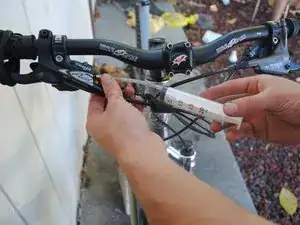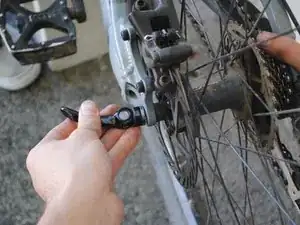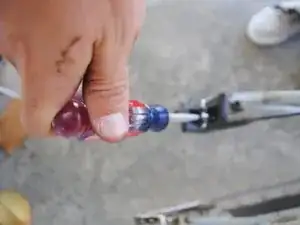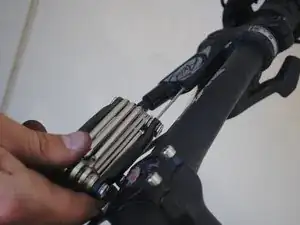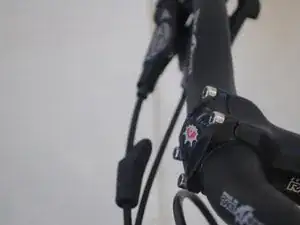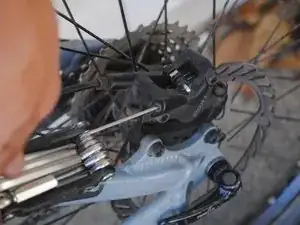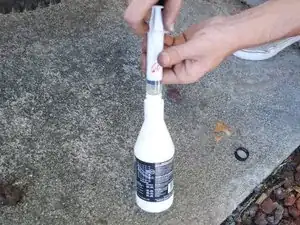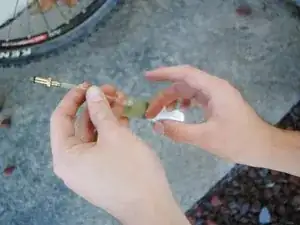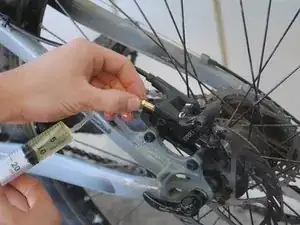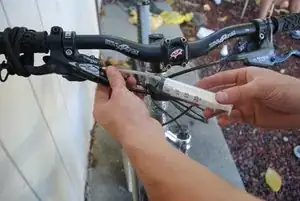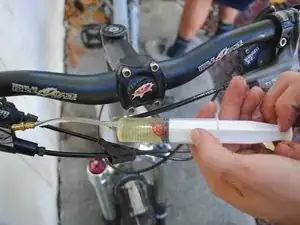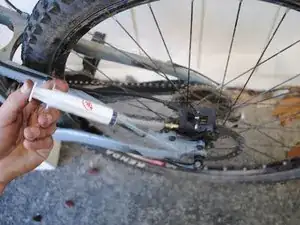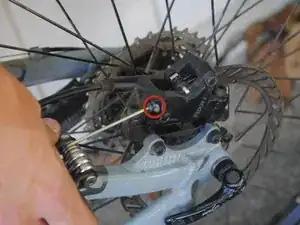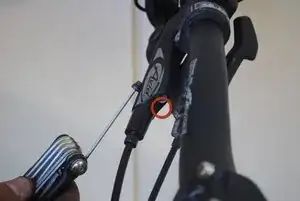Einleitung
This guide will walk through the process of adjusting the hydraulic breaks on a bicycle by means of adding hydraulic fluid to the system. Properly done, this process will increase the responsiveness of your brakes, shortening the amount of time required to bring your bicycle to a stop.
Werkzeuge
Ersatzteile
-
-
Pull out and rotate the quick release lever until the axle is loose.
-
Pull back on the derailleur on the left hand side. This lessens the force required to remove the wheel from its mount greatly.
-
Lift the bike, and pull the wheel from its mount.
-
-
-
Use a flat head screwdriver to push out on the break pads in order to space the hydraulic pistons.
-
-
-
Slide the cover off of the hydraulic port until it is fully exposed.
-
Use a torque head bit to remove the screw on the hydraulic port of the brake handle. Be careful to not lose this screw.
-
-
-
Fill your syringe with hydraulic fluid.
-
Clear air out of the syringe by holding it upright, flicking on it with your finger, and pushing on the stopper until hydraulic fluid starts to come out.
-
-
-
Screw the full syringe into the port on the caliper at the rear of the bike shown in the first photo.
-
Screw an empty syringe into the port at the front at the brake lever shown on the second photo. Fully depress this syringe before attaching it to the hydraulic system.
-
-
-
Remove the back syringe first. Depress the top syringe a little bit so that hydraulic fluid almost starts to flow out of the open hole. Then, replace the screw.
-
Once the first screw is replaced, remove the top syringe and replace that screw shown in the 2nd image.
-
To reassemble your device, Replace the cover on the hydraulic port and reinstall the wheel with the calipers still in their widened position. Make sure that all screws over on the hydraulic ports are very secure. Once the wheel is installed, pump the brakes a few times to seat the brake pads. Confirm function of your brakes before attempting to ride the bike by inverting the bike so that it rests on the handlebars and seat, then spinning the rear and front wheels manually. If this does not work, you may need to add more fluid. Ride safe!
